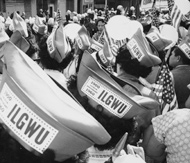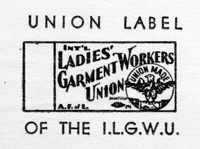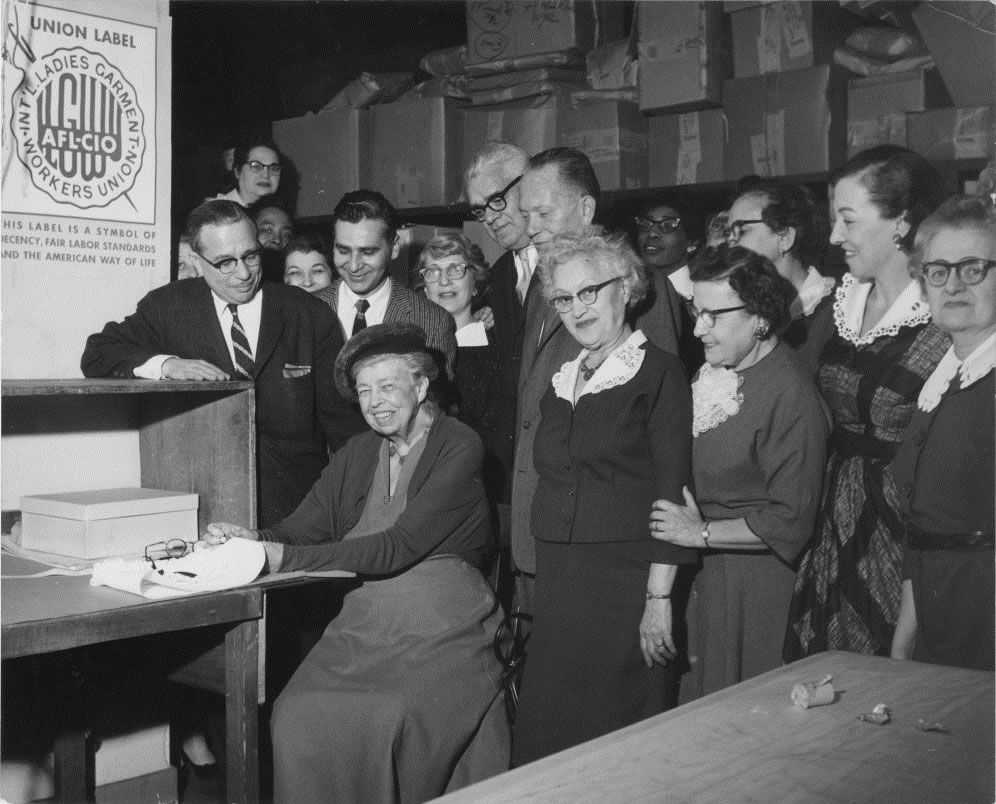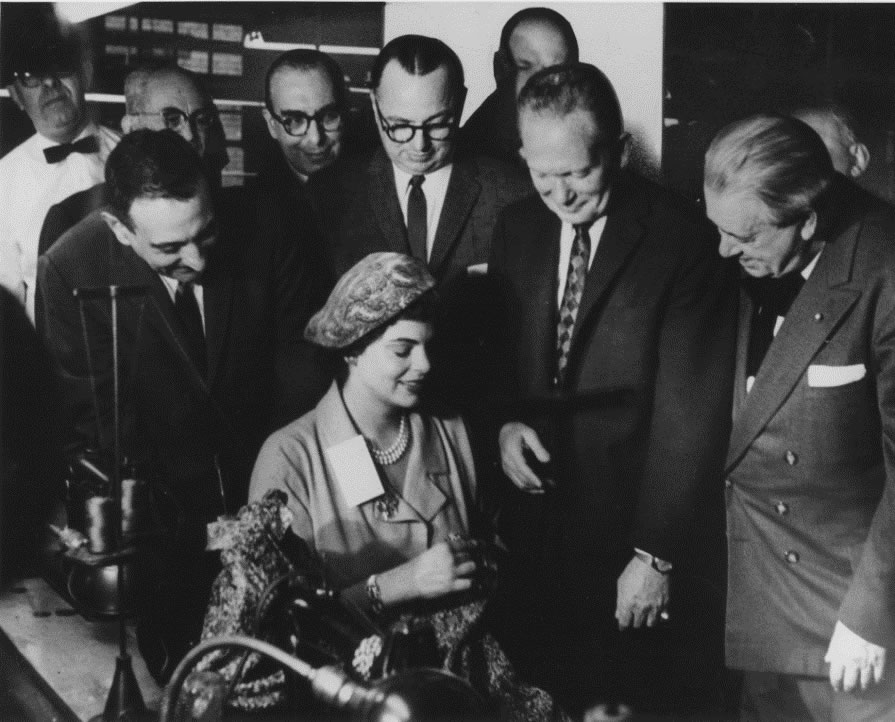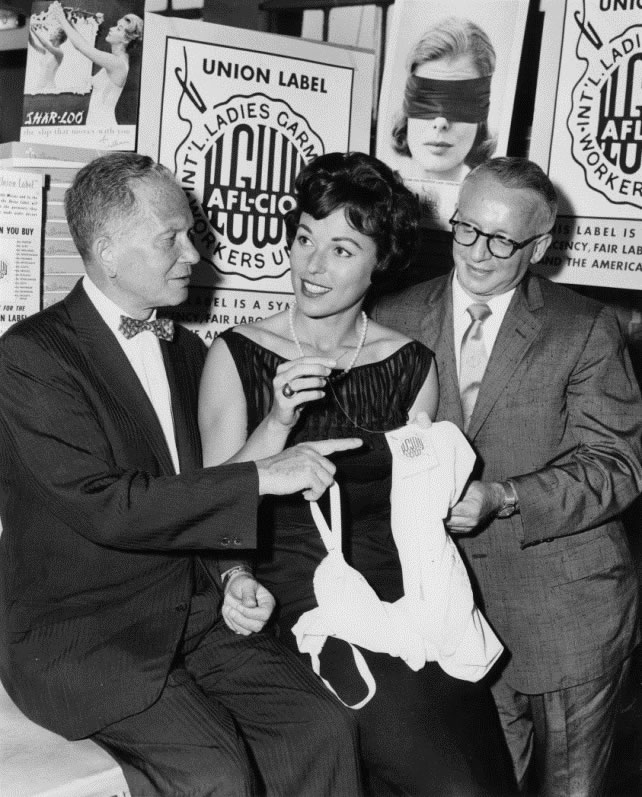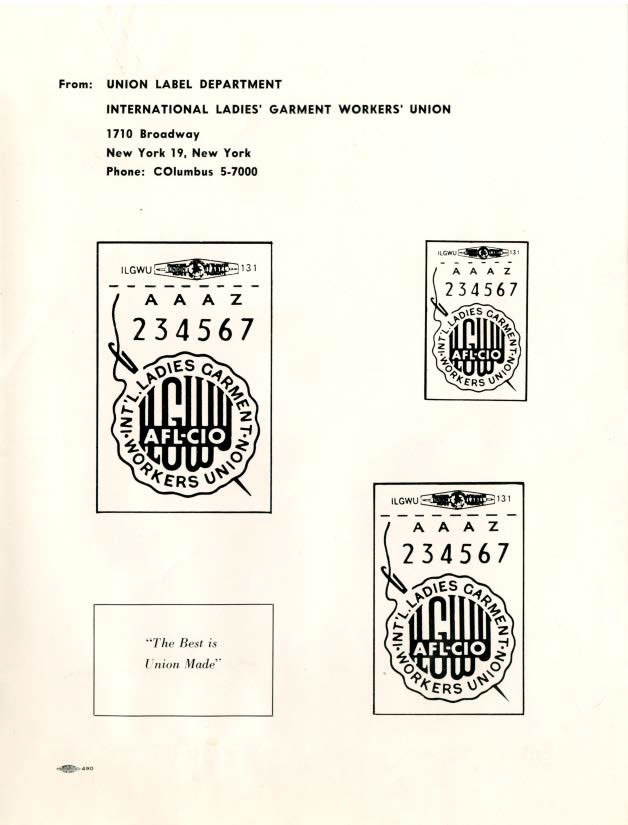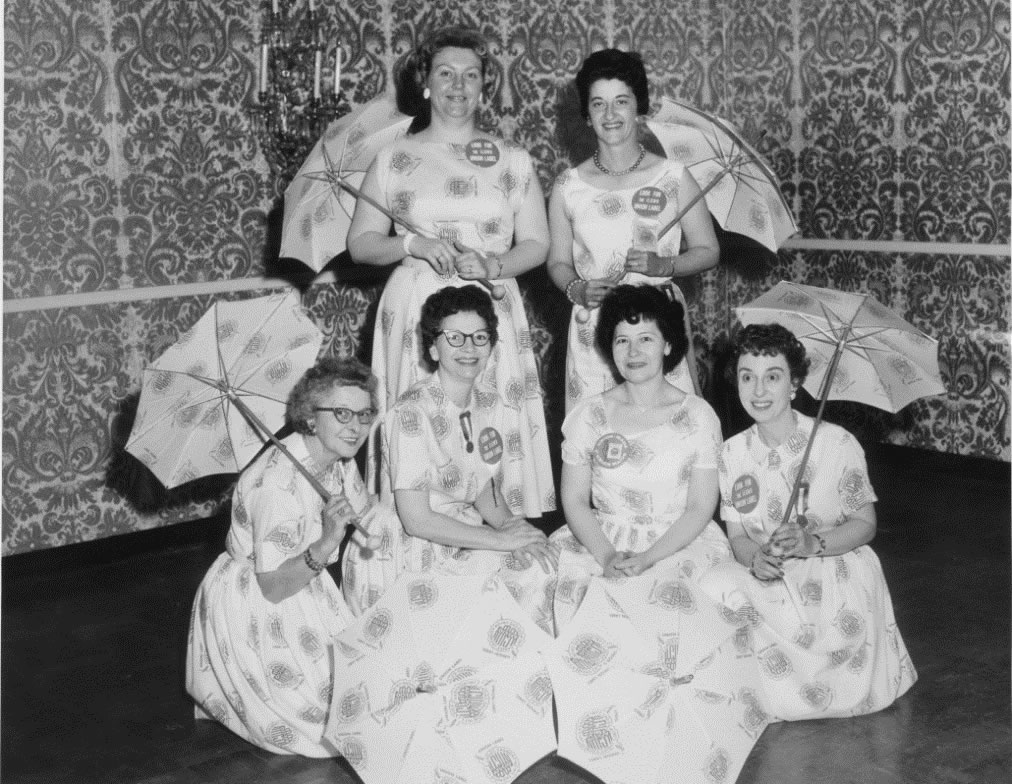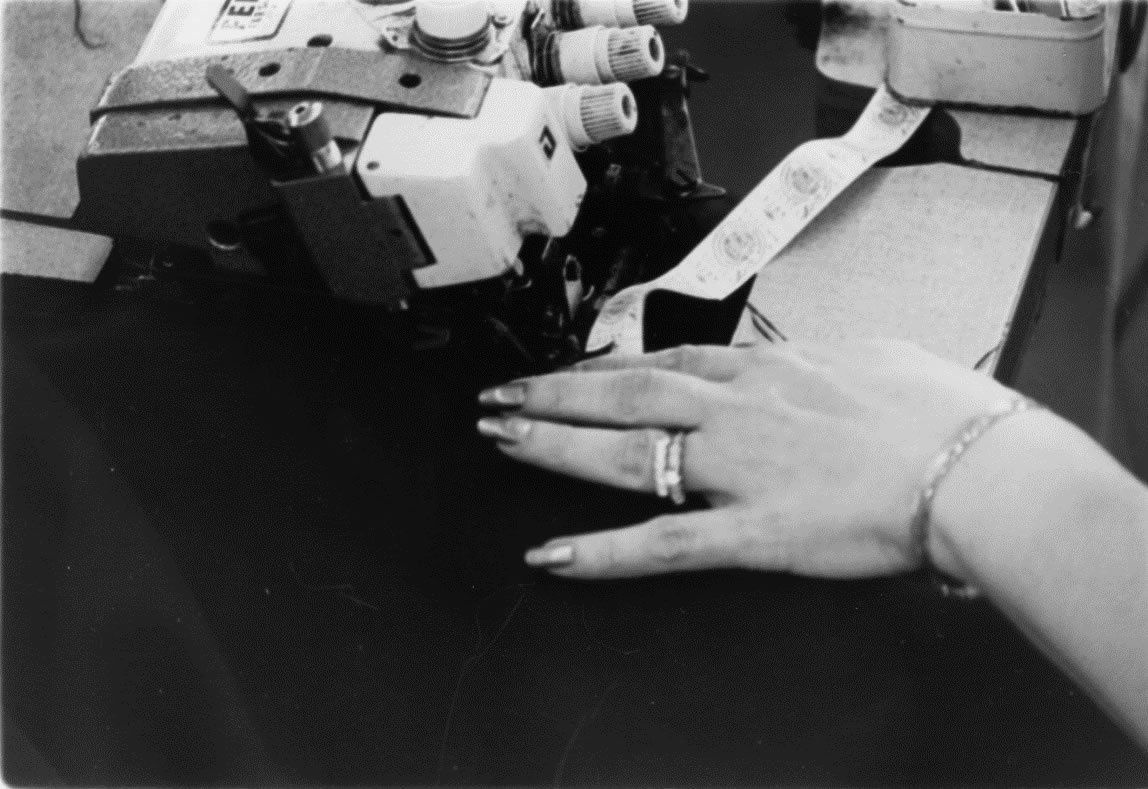

Timeline
Union Label Timeline
Background
The first use of a union label was the Cigar maker's Union in 1874 when the boxes of cigars made under union conditions were tagged with a label. Though the International Cloakmaker's Union (1892) did call for a union label at its initial convention nothing ever came of it, as the group was only in existence a short time.
When ILGWU founders met on June 3, 1900 and named their union, they immediately adopted a label for it. Early results were encouraging but use remained limited and after 5 years the first label drive ended with only one company in Kalamazoo continuing to use the label. ILGWU called for use of a union label at its first convention. Its use was slow to take hold however, as it was optional and seen as being of limited use.
Pre-1933
There was a proposal to make a union label use compulsory in all NYC cloak industry unionized shops. Governor Smith's special commission recommended adoption of the label as an industry-wide label. Implementation was delayed, however, due to other more pressing concerns and infighting among union factions.
The Prosanis label (1924-1929) was used in New York and controlled by the Joint Board of Sanitary Control.
1933 - 1935 - Label Samples
1933
During the New Deal era the blue eagle label was introduced as part of the National Recovery Act. It was not limited to the garment industry and acted as a symbol that the goods that displayed the emblem were produced under conditions beneficial to the worker, the economy, and the country. Industries that employed fair labor-management practices were allowed to use the Blue Eagle on their products.
The coat-suit industry was the first of the apparel trades to formulate a fair labor-management code and put NRA label into use. Other garment industry sectors followed.
The New York dressmaker's strike of 1933 settlement made the NRA label obligatory upon all producers of dresses.
1935
Supreme Court declares National Recovery Act unconstitutional.
The National Coat & Suit Recovery Board formed to continue code practices on a voluntary basis. They continued to issue a consumer label, creating the Consumer Protection label which was used up until at least 1959.
1936
ILGWU forms Union Label Office. Thirty-two firms were using the label.
1941
New York Dress Institute Label created to promote New York dress producers.
Pre-1955
1959-1963 - Label Samples
1955
The AFL & CIO merged and the change was reflected in the wording of the label. Therefore if labels say AFL-CIO instead of AFL they are from 1955 or later.
1956
ILGWU President David Dubinsky aims to make the union label mandatory in the dress industry.
1958
ILGWU Union Label Department established.
Basic outerwear features a small blue imprinted fabric rectangle measuring approximately 1 & 1/4 x 7/8 inches.
1959
The ILGWU Union Label was launched on January 9, 1959. The first garment industry-wide label was hand-sewn onto a garment by Mrs. Nelson A. Rockefeller.
Mrs. Mary Rockefeller - 1/15/59Additional launch events were held, including the following:
January 21 Paramount Dress Shop in Philadelphia, PA Mrs. Richardson Dilworth, wife of the mayor with Mayor Dilworth looking on
March 5 Glen of Michigan Plant in Manistee, MI Mrs. G, Mennen Williams, wife of the Governor
March 17 Clinton Garment Company Clinton, IA Mrs. Herschel Loveless with Governor Loveless looking on
March 19 Sacramento, CA Mrs. Edmund G. Brown with Governor Brown present
March 20 Junior House shop Milwaukee, WI Mrs. Gaylord Nelson, wife of the Governor
March 23 Los Angeles, CA Mrs. Norris Poulson, wife of the mayor
March 24 Charles Hyman shop Chicago, IL Mrs. Richard J. Daley, wife of the mayor
March 26 San Francisco, CA Mrs. George Christopher with Mayor Christopher looking on
March 27 Albert Rosenblatt shop Rutland, VT
Mrs. Robert T. Stafford, wife of the Governor
Mrs. Robert Meynor, Newark Governor's wifeThe ILGWU 1959 Report to the General Executive Board regarding the union label states that "the control system hinges on code letters and serial numbers on each label for purpose of record keeping and easy identification of the employers involved." (pg. 96) A letter from the Union Label department dated February 24, 1982 also indicates that it was at one time possible to determine the manufacturer of a garment if you had both the letters and numbers from the label.
May 10, 1959 - First ILGWU union label ad approved
A 1959 assessment per member was proposed that was intended for use for the promotion of the union label and to cover production and administrative costs. The sale of the union labels to employers was hoped to fund these expenses.
Labels used in US in items leaving garment shops:
1959 377,750, 700
1960 494,146, 978
1961 883,763,100
1963 - 1974 - Label Samples
1960
May 1960 - Coat & Suit Industry Recovery Board Label and the ILGWU label were merged.
1963
Change in label design to emphasize the words "union made".
Proposal endorsed to locate label with or near the size tag and wherever possible combine the union label and the company/fiber content label(s).
1968
2,760,000,000 labels distributed to affiliates over the previous three year period.
1974 - 1995 - Label Samples
1974
Union label emphasized in 1970s during a steep increase in imported goods on the American market. The challenges of these increased imports led to some changes in the union label. The color changed to red, white, and blue and a line that said "Made in the U.S.A." was added.
1976
Significant decline in label sales over previous three year period ending December 31, 1976 from 2,224,918, 000 to 1,714, 127,000.
1985
Textile Fiber Products Identification Act makes "Made in the U.S.A." label mandatory on all domestic garments.
1995
The ILGWU merged with the ACTWU to form the Union of Needletrades, Industrial and Textile Employees.
Bibliography
Tyler, Gus. 1995. Look for the union label: a history of the International Ladies' Garment Workers' Union. Armonk, N.Y.: M.E. Sharpe.
International Ladies' Garment Workers' Union. Trends and prospects: women's garment industry: report presented by General Executive Board to the ILGWU Convention. [1928-1974] New York: International Ladies' Garment Workers' Union.


